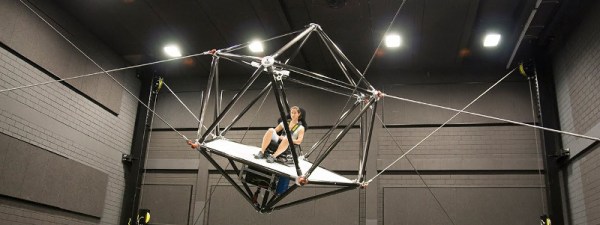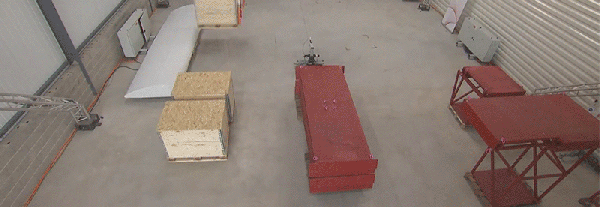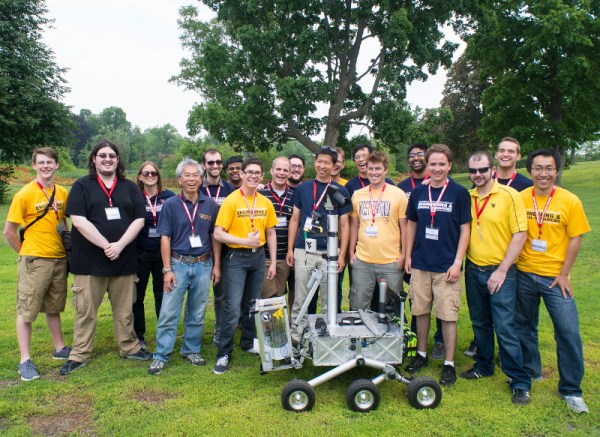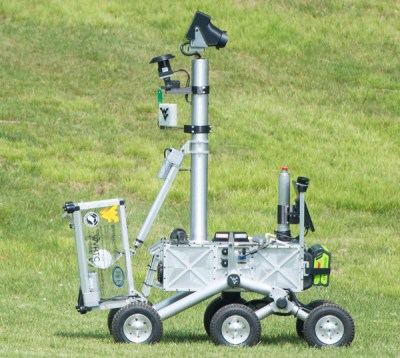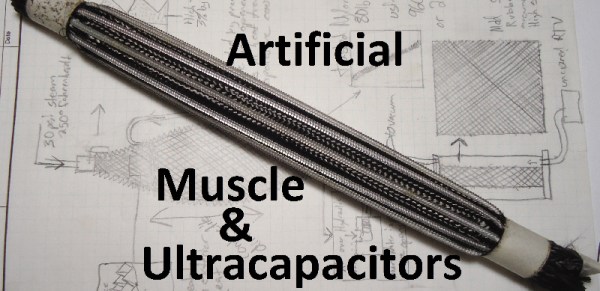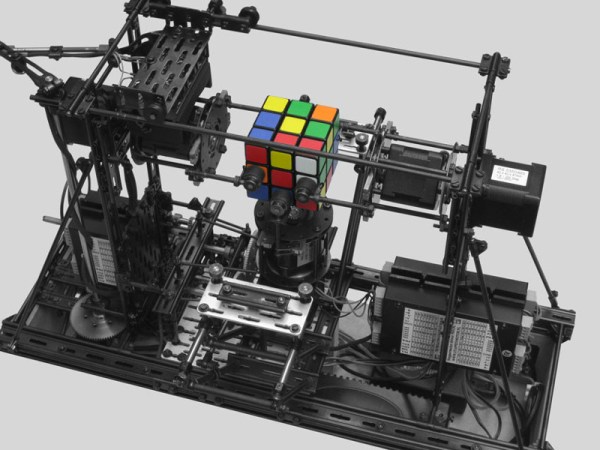Straight from the Max Planck Institute for Biological Cybernetics, and displayed at this year’s Driving Simulation Conference & Exhibition is the coolest looking simulation platform we’ve ever seen. It’s a spherical (or icosahedral) roll cage, attached to the corners of a building by cables. With the right kinematics and some very heavy-duty hardware, this simulation platform has three degrees of translation, three degrees of rotation, and thousands of people that want to drive a virtual car or pilot a virtual plane with this gigantic robot.
The Cable Robot Simulator uses electric winches attached to the corners of a giant room to propel a platform with 1.5g of acceleration. The platform can move back and forth, up and down, and to and fro, simulating what a race car driver would feel going around the track, or what a fighter pilot would feel barreling through the canyons of the Mojave. All you need for a true virtual reality system is an Oculus Rift, which the team has already tested with driving and flight simulation programs
An earlier project by the same research group accomplished a similar feat in 2013, but this full-motion robotic simulator was not made of cable-based robotics. The CyberMotion Simulator used a robotic arm with a cockpit of sorts attached to the end of the arm. Inside the cockpit, stereo projectors displayed a wide-angle view, much like what a VR display does. In terms of capability and ability to simulate different environments, the CyberMotion Simulator may be a little more advanced; the Cable Robot Simulator cannot rotate more than about sixty degrees, while the CyberMotion Simulator can turn you upside down.
The Cable Robot Simulator takes up a very large room, and requires some serious engineering – the cables are huge and the winches are very powerful. These facts don’t preclude this technology being used in the future, though, and hopefully this sort of tech will make its way into a few larger arcades.
We often see concepts come in waves. Earlier this week we featured a cable robot used to move pallets around a warehouse.
Continue reading “Cables And Winches Become An Awesome Simulator”

